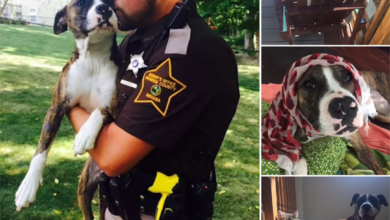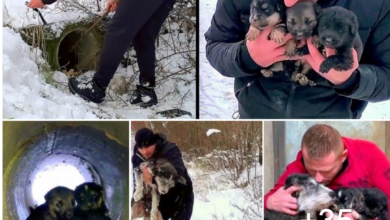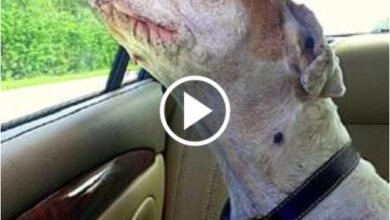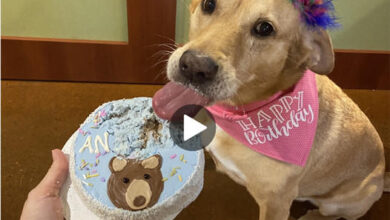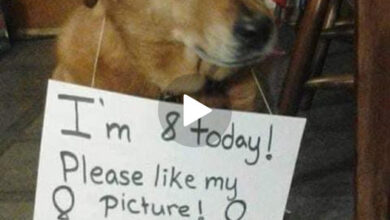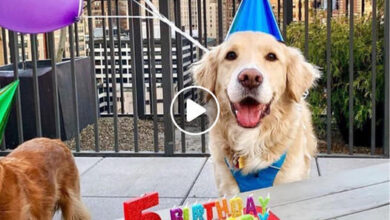How To Understand Common Dogs Behavior

Are you struggling with your dog behavior problems? Dogs are known to be man’s best friends, but they can also exhibit some frustrating behaviors that can disrupt the harmony in your household. Luckily, most of these issues have solutions that can be easily implemented with a little patience and consistency.
In this article, we will explore some of the most common dog behavior problems and provide you with practical solutions to help you address them. From excessive barking to chewing on furniture, jumping on people, aggression, separation anxiety, pulling on the leash and house training issues – we’ve got you covered.
By understanding why your dog is exhibiting certain behaviors and learning how to correct them effectively, you can enjoy a happier and healthier relationship with your furry companion.
So let’s dive in!
Excessive Barking
Excessive barking can be a frustrating behavior issue that many dog owners struggle with, but it’s important to address it in a patient and consistent manner. Teaching obedience is key to reducing excessive barking. By training your dog to obey certain commands such as ‘quiet’ or ‘no bark,’ you can control their barking and reduce the frustration for both you and your neighbors.
Training techniques for excessive barking include positive reinforcement, distraction, and desensitization. Positive reinforcement involves rewarding your dog when they stop barking on command. Distraction techniques involve redirecting your dog’s attention away from the stimulus causing them to bark, while desensitization involves gradually exposing them to the stimulus until they no longer react with excessive barking.
If excessive barking continues despite these efforts, it may be due to underlying medical or behavioral issues that require professional help. However, with patience and consistency in teaching obedience and using effective training techniques, most dogs can learn to control their excessive barking habits.
Now let’s move on to another common problem: chewing on furniture.
Chewing on Furniture
If your dog has a tendency to chew on furniture, it can be frustrating and costly. But before you get angry at your furry friend, it’s important to understand why dogs chew in the first place.
Providing appropriate chew toys and using deterrents can help redirect their chewing behavior and protect your belongings.
Let’s take a closer look at these solutions for addressing this common canine behavior problem.
Understanding Why Dogs Chew
When you come home from work and find your shoes shredded into pieces, it’s important to understand why dogs chew. Chewing is a natural behavior for dogs as it helps them relieve stress, boredom, and anxiety. Additionally, chewing can help keep their teeth clean and strong.
Understanding the anatomy of chewing behavior can also help you redirect your dog’s chewing behavior with proper training. Dogs have powerful jaws and sharp teeth that are designed to tear apart prey in the wild. When they chew on objects like furniture or shoes, they are simply satisfying their natural urge to chew. However, if left unchecked, this behavior can become destructive and costly.
Redirecting your dog’s chewing behavior with proper training is essential in preventing further damage to your belongings. This leads us to the next section about providing appropriate chew toys that will satisfy your dog’s need to chew without causing any harm.
Providing Appropriate Chew Toys
To keep your furry friend from turning your furniture into a chewed-up mess, it’s crucial to offer them appropriate chew toys that will satisfy their natural urge to gnaw. When selecting safe toys for your dog, make sure they’re made of durable materials that can withstand their chewing strength. Avoid giving them toys that easily break apart or have small parts that can be swallowed and cause choking hazards.
Training proper chewing behavior is also necessary in preventing destructive habits. Encourage your dog to use their designated chew toys by praising and rewarding them when they do so. If you catch them chewing on something they shouldn’t be, redirect their attention to the appropriate toy instead of scolding them. With consistent reinforcement, your furry friend will learn what’s acceptable to chew on and what’s not.
Transitioning into the subsequent section about using deterrents to discourage chewing, remember that prevention is key in addressing common dog behavior problems such as destructive chewing.
Using Deterrents to Discourage Chewing
You can discourage your furry friend from chewing on inappropriate items by using bitter sprays. These sprays are designed to have a foul taste that will make your dog think twice before gnawing on your belongings. When you catch your dog in the act of chewing, immediately spray the item with the bitter spray and redirect their attention to an appropriate chew toy.
In addition to using bitter sprays, redirection techniques can also be effective in stopping inappropriate chewing behavior. Whenever you catch your dog chewing on something they shouldn’t be, calmly take the item away and give them a toy that’s acceptable for them to chew on. This will not only discourage future chewing behavior but also reinforce positive habits.
With patience and consistency, these deterrents and redirection techniques can help solve common chewing issues with your furry friend.
Now let’s talk about how you can address another common problem: jumping on people.
Jumping on People
Hey there, tired of constantly being tackled by your furry friend every time you walk through the door? Jumping on people is one of the most common behavior problems among dogs. However, with a little bit of patience and consistent training, you can teach your dog to stop jumping on people.
- Teaching boundaries: Dogs need to learn that jumping on people is not acceptable behavior. Establish boundaries early on by setting rules and sticking to them. For example, if your dog jumps up when you come home from work, ignore him until he calms down and then greet him calmly.
- Positive reinforcement techniques: Reward good behavior using positive reinforcement techniques such as treats or praise. When your dog greets someone without jumping up, give him a treat or tell him he’s a good boy/girl. This will reinforce the desired behavior and encourage your dog to continue behaving well.
- Consistency is key: Make sure everyone in the household is aware of the rules and enforces them consistently. If one person allows jumping while another doesn’t, it will confuse your dog and make training more difficult.
- Seek professional help if necessary: If despite consistent training efforts, your dog continues to jump on people aggressively or uncontrollably, seek out professional help from a veterinarian or trainer who specializes in behavioral issues.
Learning how to stop your dog from jumping on people is just the first step towards improving their overall behavior. However, aggression can develop if this issue goes unchecked for too long. In our next section about aggression, we’ll discuss how uncontrolled behaviors like jumping can lead to more serious problems that may require specialized attention from professionals trained in managing canine aggression.
Aggression
Aggression in dogs can be a serious and frightening issue that requires immediate attention from trained professionals. Understanding the triggers that cause your dog to become aggressive is key in addressing this problem.
Dogs can become aggressive for a variety of reasons, such as fear, territorial protection, or socialization issues. Positive reinforcement techniques are often effective in addressing aggression in dogs. These techniques involve rewarding good behavior and ignoring bad behavior, rather than punishing the dog for undesirable actions.
This method helps to build trust between you and your dog, while also providing positive reinforcement for appropriate behavior. If you suspect your dog may have aggression issues, it’s important to seek help from a professional trainer or animal behaviorist. They can provide guidance on how to address this issue safely and effectively.
Next up, we’ll discuss separation anxiety and some tips on how to help your furry friend cope with being alone.
Separation Anxiety
When left alone, it’s not uncommon for your furry friend to experience separation anxiety. Studies show that up to 20-40% of dogs exhibit signs of this distressing condition.
Separation anxiety can manifest itself in a variety of ways, such as excessive barking, whining, or howling, destructive behavior, and even self-harm. This behavior is typically exhibited when the dog’s owner leaves the home or when there is any change in their routine.
Fortunately, there are many training techniques available to help your dog cope with separation anxiety. One effective technique is desensitization training, which involves gradually increasing the amount of time you will be away from your pet until they become comfortable being alone for longer periods.
You may also want to consider crate training or providing a safe and secure area where your pet can retreat when feeling stressed. In some cases, medication options may also be recommended by your vet to ease your dog’s anxiety symptoms. Anti-anxiety medications like fluoxetine or trazodone can help calm down an anxious dog and make them feel more relaxed.
However, medication should always be used under veterinary supervision and as part of a comprehensive treatment plan that includes behavior modification techniques. Dealing with separation anxiety can be challenging, but don’t worry – there are many resources available to help you manage this condition effectively.
Next up, we’ll discuss another common issue experienced by dog owners – pulling on the leash!
Pulling on the Leash
Walking your furry friend can be a challenge when they’re constantly tugging on the leash, making it feel like you’re being pulled in all directions. This behavior is not only frustrating for you, but it can also be dangerous for your dog and others around them. Fortunately, teaching leash manners is possible with the right training techniques.
Leash training techniques vary depending on your dog’s personality and behavior. One method involves stopping every time your dog pulls and only starting again once they calm down and walk beside you. Another approach is to use treats as positive reinforcement for good leash behavior. Whichever technique you choose, consistency and patience are key to success.
Remember that leash training takes time and effort from both you and your furry friend. Be sure to start with short walks in quiet areas before gradually increasing the distance and distractions. With practice, your dog will learn to enjoy walking calmly beside you on a loose leash without pulling or tugging.
Now that you’ve tackled teaching proper leash manners to your beloved pet, let’s move onto another important topic – house training!
House Training
House training your furry friend can be a challenging but necessary process for both you and your pet. It requires patience, consistency, and positive reinforcement.
One effective method is the crate training method, which involves keeping your dog in a crate when you’re not home or can’t supervise them. Dogs instinctively don’t want to soil their sleeping area, so this helps them learn to hold their bladder and bowel movements.
Outdoor training techniques are also important for house training your dog. Take your furry friend outside frequently, especially after meals or naps. Choose a designated spot where they can go potty and use verbal cues such as “go potty”to let them know what is expected of them. Be patient and wait until they finish before returning inside.
Consistency is key when it comes to house training your dog. Stick to a routine that works for both you and your pet, including feeding times, bathroom breaks, and playtime.
With proper training and patience, soon enough accidents will become less frequent until finally ending altogether!
Conclusion
Overall, dealing with common dog behavior problems can be frustrating and challenging, but it’s important to remember that there are solutions available. By understanding the reasons behind your dog’s behaviors and taking the time to train them properly, you can help your furry friend become a well-behaved companion.
For example, consider the metaphor of a garden. Just as a gardener needs to tend to their plants regularly in order for them to grow strong and healthy, pet owners must also put in effort to nurture their dogs’ behavior. This includes providing plenty of exercise and mental stimulation, setting clear boundaries and expectations through training, and addressing any issues that arise promptly.
One anecdote that illustrates this concept is that of a friend who had a young Labrador retriever with excessive energy who was chewing on everything in sight. After consulting with a trainer and implementing consistent training sessions and daily walks/runs for the pup, they saw significant improvements in both his behavior and overall happiness.
It took time and effort, but just like tending to a garden yields beautiful results over time, investing in your dog’s behavior will ultimately lead to a happier life for both you and your furry companion.
Read more:






